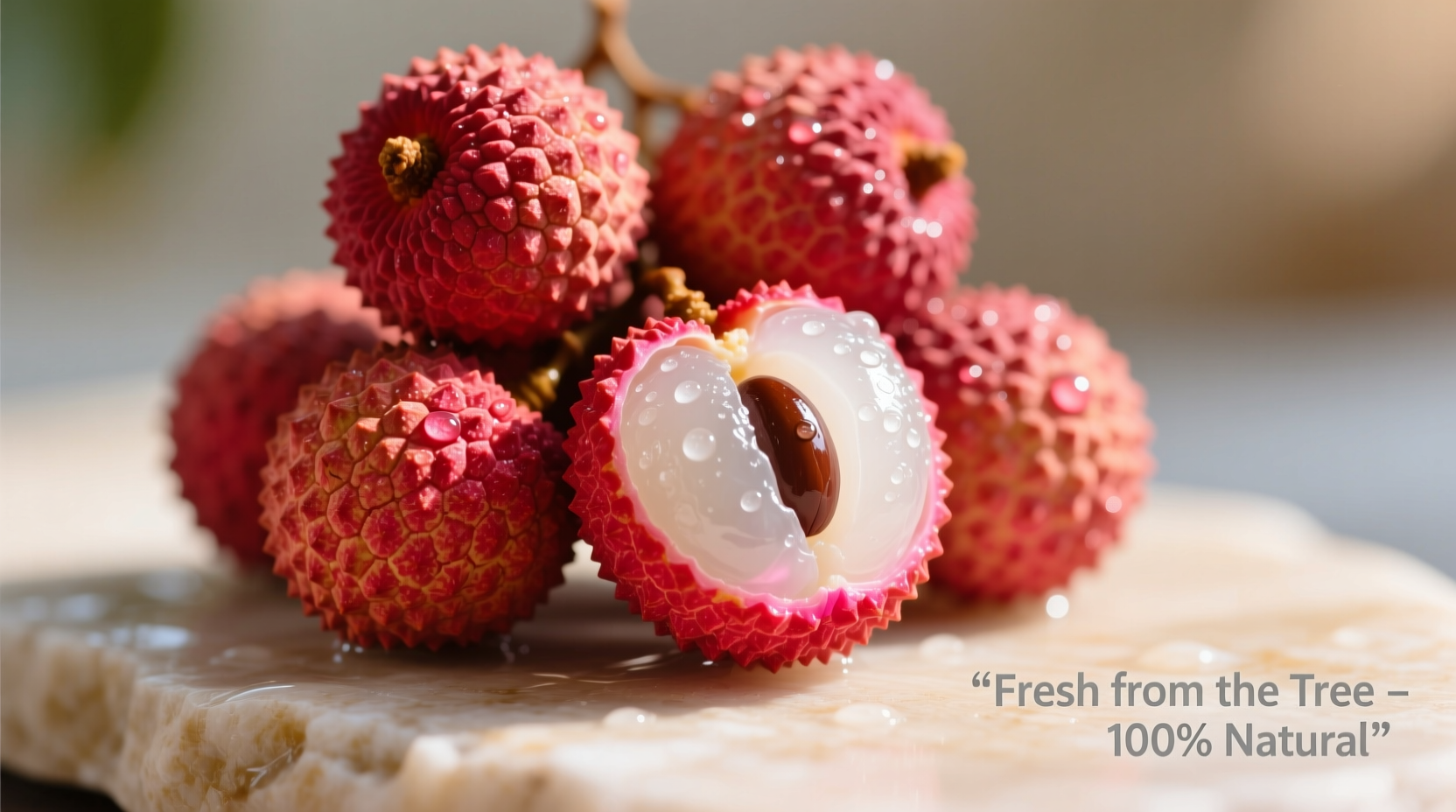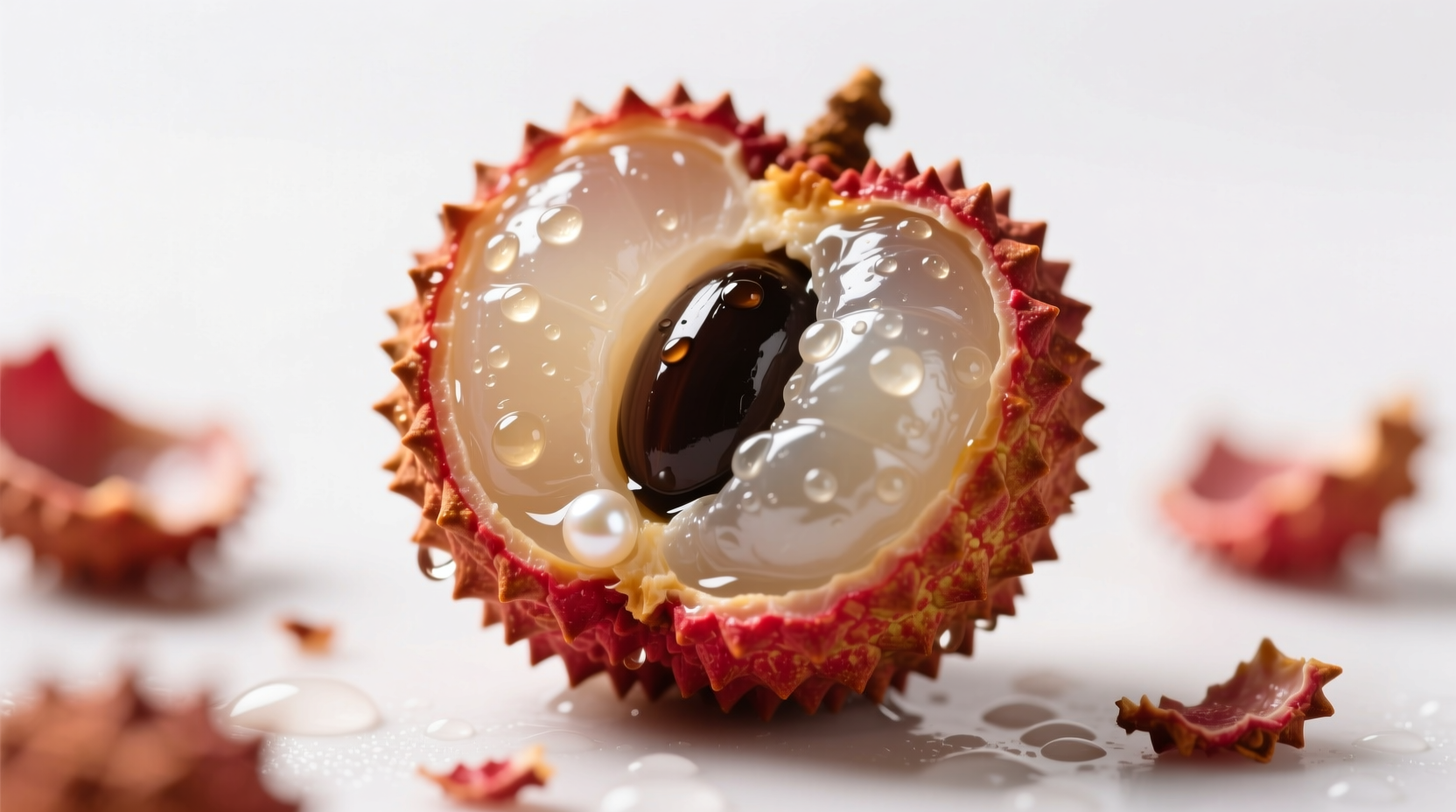Lychee fruit tastes like a vibrant fusion of sweet Muscat grapes, floral rose water, and bright citrus notes with subtle strawberry undertones. Its translucent flesh delivers a juicy, jelly-like texture that bursts with refreshing sweetness balanced by a whisper of tartness—perfectly ripe lychees contain zero acidity when harvested at peak maturity.
Your First Encounter with Lychee
Imagine holding a small, bumpy red orb roughly the size of a walnut. When you crack open lychee's leathery shell, you're greeted by an intoxicating floral aroma that fills the air before the fruit even touches your tongue. This initial sensory experience—the visual contrast of rough exterior against gleaming white flesh—prepares your palate for what food scientists call “a multi-layered flavor cascade.” Unlike predictable supermarket fruits, lychee delivers a complex taste journey that changes subtly from the first bite to the last.
Deconstructing the Lychee Flavor Profile
Let's break down what makes lychee's taste so distinctive through three critical dimensions:
Sweetness Without Cloying
At 15-20° Brix (sugar measurement), lychee rivals mango in sweetness but avoids overwhelming saccharine notes. University of Florida's Tropical Research Extension confirms this balance stems from unique sugar composition where fructose dominates with minimal glucose. The result? A clean, wine-like sweetness reminiscent of ripe Muscat grapes that never coats your mouth.
Floral-Citrus Symphony
That unmistakable perfume comes from linalool and geraniol compounds also found in roses and lychee blossoms. But don't mistake it for artificial flavoring—fresh lychee offers nuanced layers: the initial burst of rosewater gives way to bright lemon verbena notes, then finishes with a hint of wild strawberry. This complexity explains why chefs like Thomas Keller use lychee in both desserts and seafood dishes—its flavor bridges sweet and savory applications seamlessly.
Texture That Defies Expectations
Forget fibrous mango or seedy watermelon. Lychee's semi-translucent flesh has the delicate quiver of panna cotta with the juicy snap of a perfect grape. When perfectly ripe, it separates cleanly from the inedible seed, delivering a mouthfeel food writer Harold McGee describes as “a liquid jewel.” This unique texture directly impacts taste perception—the sudden release of juice amplifies flavor intensity compared to denser fruits.
| Flavor Component | Intensity Level | Common Comparisons | Peak Season Influence |
|---|---|---|---|
| Sweetness | High (15-20° Brix) | Muscat grapes, honeydew | June harvest: +20% sugar content |
| Floral Notes | Very High | Rose water, lychee blossom | May-July: peak linalool concentration |
| Citrus Undertones | Moderate | Lemon verbena, yuzu | Early season: more pronounced tartness |
| Berry Hints | Subtle | Wild strawberry, rambutan | Late season: enhanced complexity |
Why Your Lychee Experience Might Differ
Several context boundaries dramatically affect taste perception:
- Ripeness stage: Unripe lychees (greenish-pink) taste sour and astringent, while overripe specimens develop fermented notes. Only fully red, slightly yielding fruits deliver ideal flavor.
- Varietal differences: The popular 'Mauritius' cultivar offers balanced sweetness, while 'Brewster' leans more floral. Chinese 'Guiwei' varieties pack intense rose notes.
- Freshness window: Lychees lose 30% of volatile aroma compounds within 24 hours of harvest. That’s why off-season lychees often taste “flat” compared to peak-season fruit.
How to Experience Authentic Lychee Flavor
Follow this professional tasting sequence to appreciate the full flavor arc:
- Examine: Choose fruits with bright red, unblemished shells (avoid brown spots)
- Sniff: Detect sweet floral notes through shell cracks—absence of aroma means underripe
- Peel: Score shell with fingernail, remove in sections to avoid bitter membrane contact
- Taste: Eat whole with seed—the flesh’s contact with seed enhances flavor complexity
- Finish: Note the clean aftertaste with no lingering stickiness

Practical Applications Beyond Raw Eating
Understanding lychee's flavor profile unlocks creative uses:
- With seafood: Its floral notes complement scallops better than lemon—try lychee salsa on seared scallops
- In beverages: Muddle with basil for cocktails (avoid heat which destroys delicate aromas)
- With dairy: Pairs exceptionally with goat cheese—the fruit's sweetness balances tanginess
- Preservation tip: Freeze whole lychees in syrup to maintain 80% of fresh flavor for 6 months
Remember that cooking fundamentally alters lychee's taste chemistry. Heat above 140°F degrades linalool compounds, leaving only generic sweetness. For authentic flavor, always use fresh or flash-frozen lychees in cold preparations.
Where to Find the Best Lychee Experience
Seasonality is non-negotiable for authentic taste. In North America, peak season runs May-July with Florida and California harvests. Look for:
• Farmers' markets (direct-from-farm = less than 48hr harvest)
• Asian grocery stores with misting systems (prevents dehydration)
• Vacuum-sealed packs with no added syrup (preserves natural flavor)
Avoid canned lychees in heavy syrup—the processing destroys volatile aroma compounds and adds artificial flavor notes. Frozen puree works for smoothies but lacks textural magic.











 浙公网安备
33010002000092号
浙公网安备
33010002000092号 浙B2-20120091-4
浙B2-20120091-4